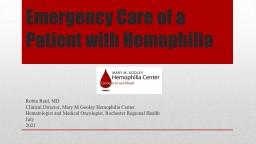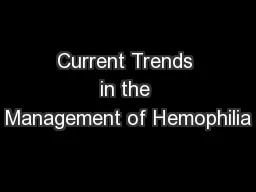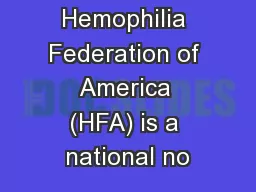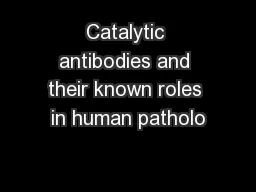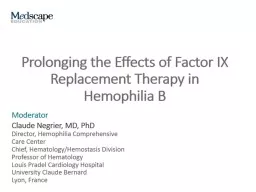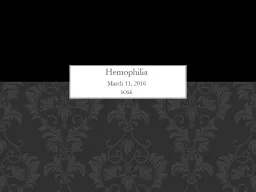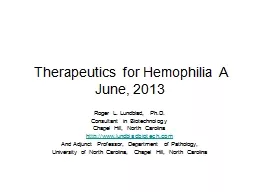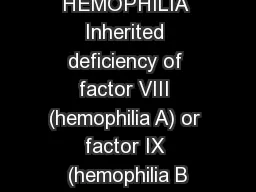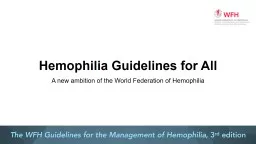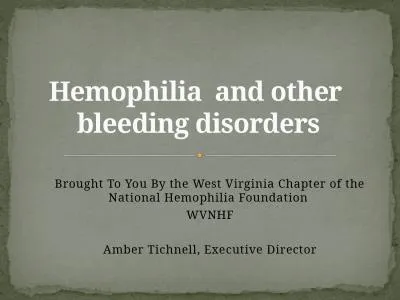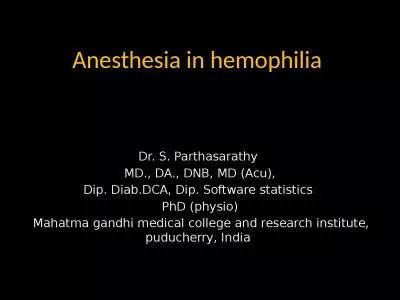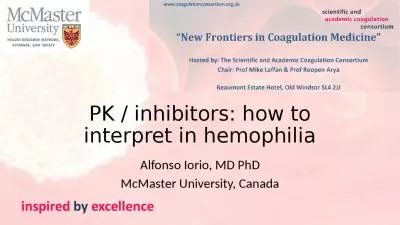PPT-Emergency Care of a Patient with Hemophilia
Author : angelina | Published Date : 2024-02-03
Robin Reid MD Clinical Director Mary M Gooley Hemophilia Center Hematologist and Medical Oncologist Rochester Regional Health July 2021 Outline History of the Mary
Presentation Embed Code
Download Presentation
Download Presentation The PPT/PDF document "Emergency Care of a Patient with Hemophi..." is the property of its rightful owner. Permission is granted to download and print the materials on this website for personal, non-commercial use only, and to display it on your personal computer provided you do not modify the materials and that you retain all copyright notices contained in the materials. By downloading content from our website, you accept the terms of this agreement.
Emergency Care of a Patient with Hemophilia: Transcript
Download Rules Of Document
"Emergency Care of a Patient with Hemophilia"The content belongs to its owner. You may download and print it for personal use, without modification, and keep all copyright notices. By downloading, you agree to these terms.
Related Documents

